Best Lawn Dethatchers of 2025: Top 10 Picks for Every Lawn Type
- February 24, 2025
- 0 comment
To keep your lawn healthy and green, it’s important to remove the layer of dead grass and roots, called thatch, that builds up over time. Thatch can block water, air, and nutrients from reaching the soil, which can harm your grass. By using tools like dethatching rakes or power dethatchers, you can remove this layer and help your lawn grow better. The best times to dethatch are early spring or early fall when the grass is actively growing. After dethatching, it’s helpful to water and fertilize your lawn to support its recovery.
That’s where a good lawn dethatcher comes in. These powerful tools break up and remove excess thatch, helping your grass grow stronger and healthier. But with so many options on the market, how do you choose the right one? In this guide, we’ll explore the best lawn dethatchers of 2025, discuss why dethatching is important, and provide tips on using and maintaining your dethatcher for the best results.
List of Best Lawn Dethatchers for 2025
What is Lawn Dethatching?
Dethatching is the process of removing the thick layer of organic debris that sits between the soil and the living grass. A small amount of thatch is beneficial, as it provides insulation and retains moisture. However, when thatch exceeds half an inch, it begins to act as a barrier, blocking essential nutrients, sunlight, and water.
Many homeowners confuse dethatching with aeration. While both improve lawn health, they serve different purposes. Dethatching removes the surface debris that chokes your grass, while aeration creates holes in the soil to allow for better airflow and root expansion. The two processes work together to revitalize struggling lawns.
How Do You Know If Your Lawn Needs Dethatching?
If your grass feels spongy underfoot, struggles to absorb water, or has weak, thinning patches despite regular watering, excessive thatch may be the culprit. A simple way to check is by digging up a small section of your lawn. If the thatch layer is thicker than ½ inch, it’s time to dethatch.
Best Lawn Dethatchers of 2025
1. Sun Joe AJ805E – Best Overall
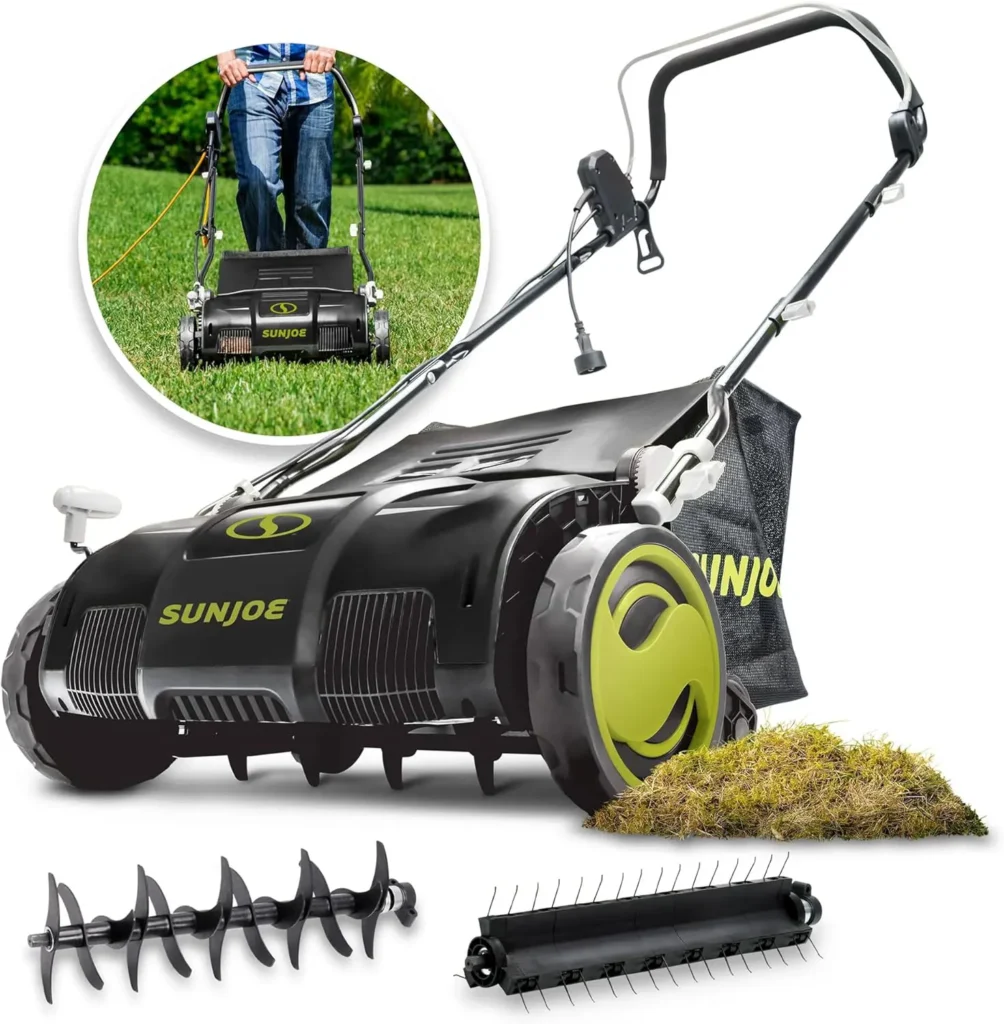
When I first used the Sun Joe AJ805E, I was impressed by its robust 13-amp motor, which effortlessly powered through my small to medium-sized yard. The 15-inch wide path allowed me to cover ground quickly, and the adjustable depth control let me tailor the dethatching process to my lawn’s specific needs. The detachable 13.2-gallon collection bag made cleanup a breeze, efficiently collecting debris and leaving my lawn looking revitalized.
2. Greenworks 10 Amp 14-Inch – Best for Small Yards
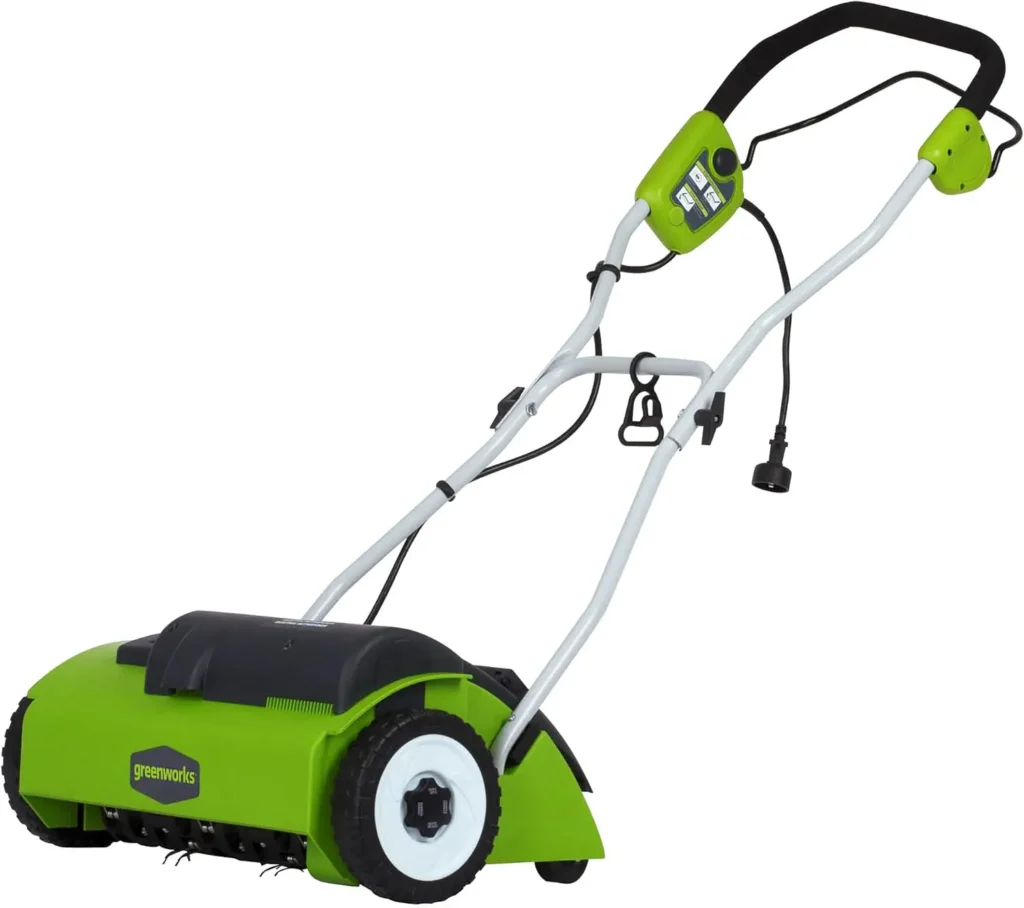
For my compact lawn areas, the Greenworks 10 Amp 14-Inch dethatcher proved to be a game-changer. Its lightweight design made maneuvering around tight spots effortless. The 10-amp motor provided sufficient power, and the 14-inch dethatching path ensured efficient coverage. I appreciated the three-position tine depth adjustment, which offered control over the dethatching intensity, and the ergonomic, padded grip that added to the comfort during use.
3. Brinly DT-402BH-A – Best for Large Lawns
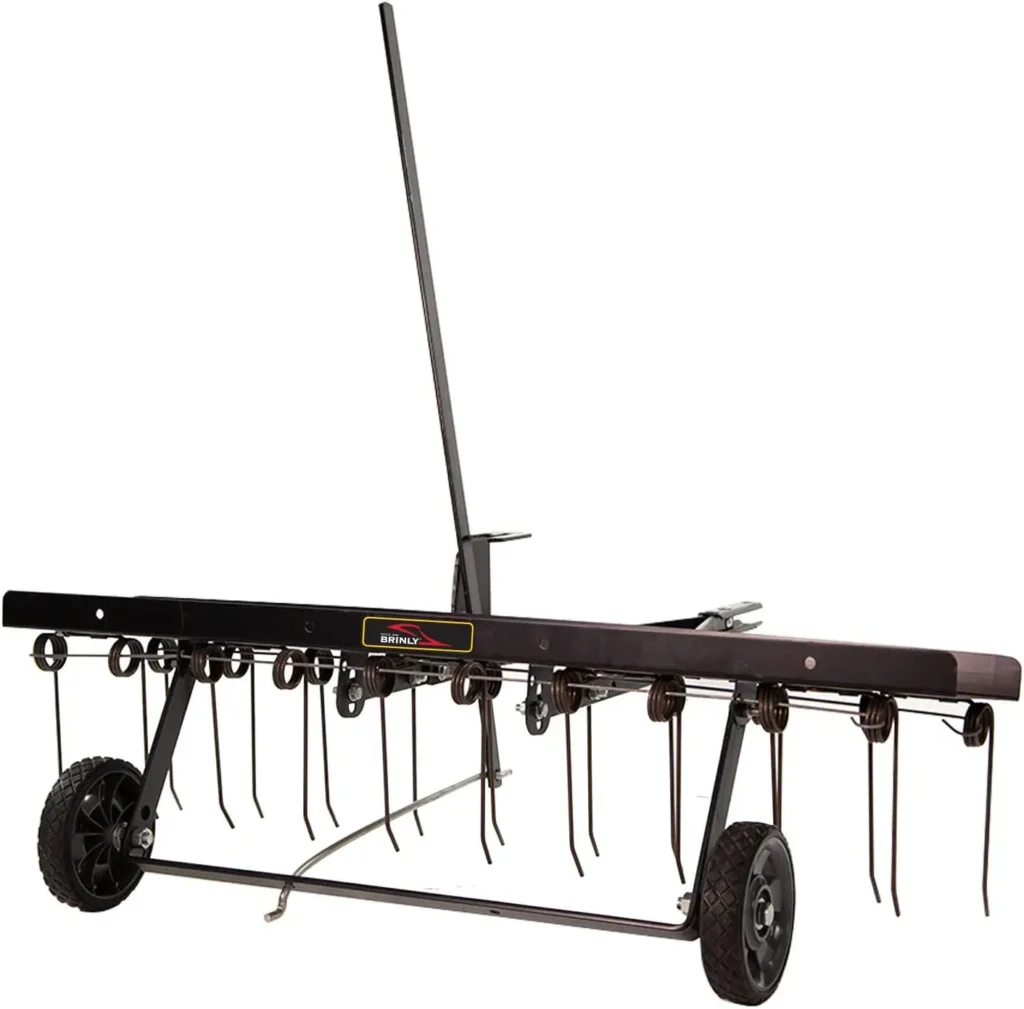
Managing a large property can be daunting, but the Brinly DT-402BH-A tow-behind dethatcher made the task manageable. Attaching it to my riding mower was straightforward, and the 40-inch wide path covered substantial ground with each pass. The two rows of independently flexing steel tines effectively lifted thatch, and the option to add weights on top allowed for deeper penetration when necessary. The engagement lever was conveniently accessible from the driver’s seat, making it easy to switch between transport and operational modes.
4. Agri-Fab 45-0295 – Best Heavy-Duty Option
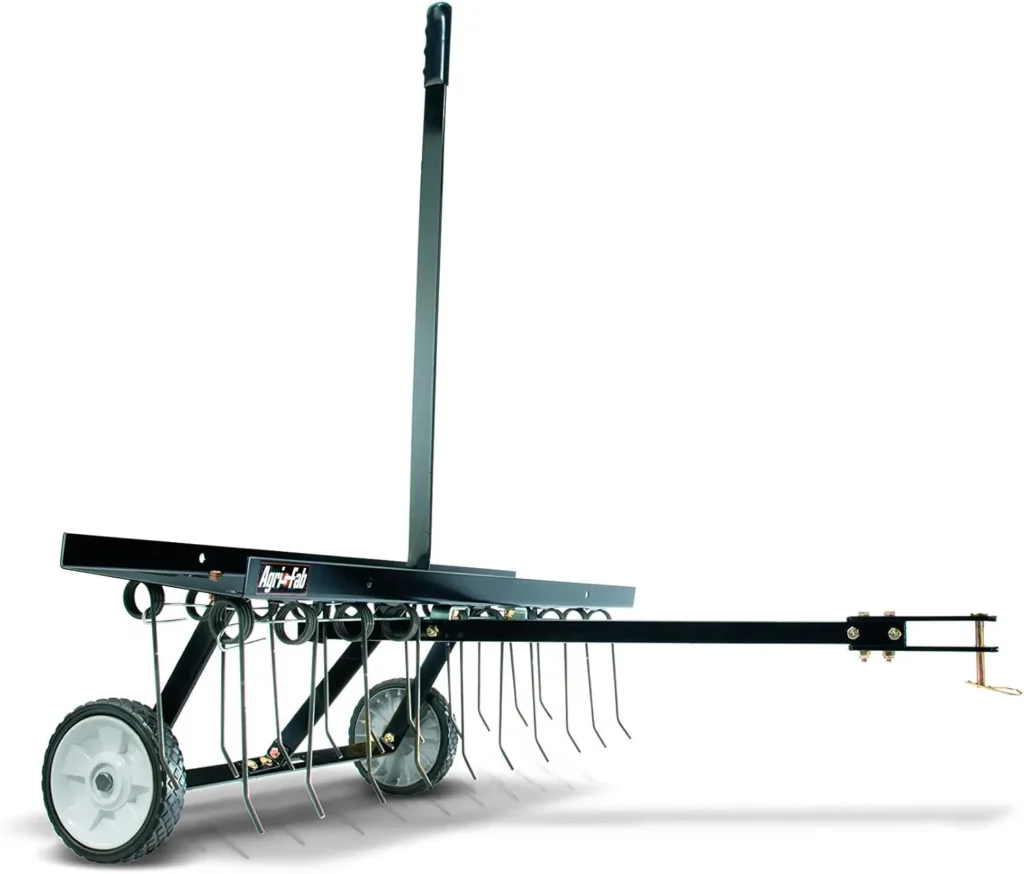
Tackling heavy-duty dethatching on expansive lawns became less of a chore with the Agri-Fab 45-0295. This 48-inch tow-behind dethatcher featured 24 heat-treated tines that penetrated deeply, removing thick layers of thatch efficiently. The durable steel construction gave me confidence in its longevity, and the universal hitch made it compatible with various riding mowers. The transport handle allowed for easy raising and lowering of the tines, facilitating smooth transitions across different terrains.
5. Earthwise DT71613 – Most Powerful Electric Dethatcher
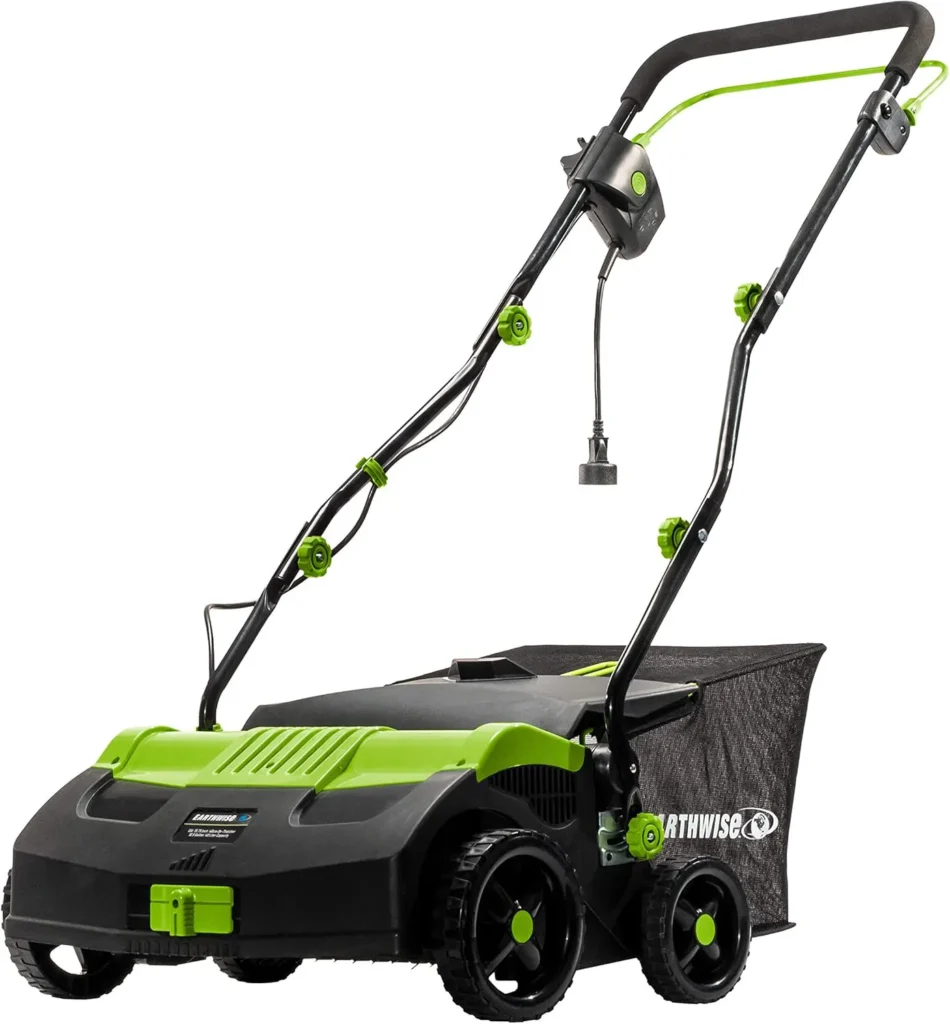
When I needed a more powerful electric option, the Earthwise DT71613 stood out. Its 13-amp motor and 16-inch working width made quick work of even the most stubborn thatch. The dual-functionality of dethatching and scarifying provided versatility, and the five-position depth adjustment allowed me to customize the operation to my lawn’s requirements. The 10.5-gallon collection bag was adequate for my needs, and the foldable handle made storage convenient.
Why Dethatching is Essential for Lawn Health
A healthy lawn needs more than just regular mowing and watering. If thatch is left unchecked, it can cause significant damage. Here’s why dethatching is a key part of lawn care:
Improves Water and Nutrient Absorption
Thatch acts like a sponge, trapping moisture and blocking nutrients from reaching the roots. When you remove this excess layer, water and fertilizers can penetrate the soil more effectively, promoting deeper, healthier root growth.
Prevents Lawn Disease and Pest Infestations
Thick thatch creates a damp, humid environment that encourages fungus, mold, and pests like grubs and insects. By dethatching regularly, you eliminate these breeding grounds, keeping your lawn healthier.
Encourages Stronger Grass Growth
Grass needs space to grow, and too much thatch prevents new shoots from emerging. Dethatching allows young grass to develop properly, leading to a fuller, greener lawn.
When is the Best Time to Dethatch?
The ideal time depends on your grass type:
- Cool-season grasses (Fescue, Kentucky bluegrass) → Early spring or fall
- Warm-season grasses (Bermuda, Zoysia) → Late spring to early summer
Avoid dethatching during extreme heat, drought, or winter dormancy, as grass may struggle to recover.
How to Choose the Best Lawn Dethatcher
With so many dethatchers available, choosing the right one depends on your lawn size, budget, and dethatching needs. Here’s what to consider:
Electric vs. Gas vs. Tow-Behind Dethatchers
- Electric dethatchers are lightweight, easy to use, and ideal for small to medium yards.
- Gas-powered dethatchers offer more power, making them better for large lawns with heavy thatch buildup.
- Tow-behind dethatchers attach to riding mowers, covering big areas quickly with minimal effort.
Blade Type and Dethatching Width
Dethatchers use spring tines or sharp steel blades to lift and break up thatch. Wider models cover more ground but require more storage space.
Adjustable Depth Settings & Collection Bags
A dethatcher with adjustable depth levels gives you better control over how much thatch is removed, preventing excessive damage. Some models include a collection bag, making cleanup easier.
How to Use a Lawn Dethatcher Effectively
To dethatch properly, mow your lawn shorter than usual before starting. If the soil is dry, a light watering the day before can soften the thatch, making removal easier.
Move in straight, even passes, similar to mowing. If your thatch is particularly thick, go over the lawn again at a perpendicular angle. Once dethatching is complete, rake up the loosened debris and water your lawn deeply to help it recover.
Maintaining Your Lawn Dethatcher
Step 1: Clean the Dethatcher After Each Use
After every use, it’s crucial to remove debris such as grass clippings, soil, and thatch from the tines or blades. Accumulated debris can lead to rust and reduce the effectiveness of the equipment.
- Procedure: Ensure the dethatcher is turned off and disconnected from any power source. Use a stiff brush or hose to clean the tines or blades thoroughly. For stubborn debris, a putty knife can be used to scrape off the buildup.
Step 2: Inspect for Wear and Damage
Regular inspections help identify any signs of wear or damage, allowing for timely repairs or replacements.
- What to Look For: Examine the tines or blades for signs of dullness, bending, or breakage. Check other components such as wheels, belts, and fasteners for wear or looseness.
- Action: Replace or repair any damaged parts promptly to prevent further deterioration and ensure safe operation.
Step 3: Lubricate Moving Parts
Proper lubrication reduces friction between moving parts, preventing wear and extending the lifespan of your dethatcher.
- Frequency: Refer to the manufacturer’s guidelines, but generally, lubricate moving parts after every 8-10 hours of use.
- Procedure: Apply a suitable lubricant to areas such as wheel bearings, pivot points, and any other moving components. Wipe away any excess to prevent the attraction of dust and debris.
Step 4: Sharpen or Replace Blades as Needed
Sharp blades are essential for effective dethatching. Dull blades can tear grass rather than cut it cleanly, leading to lawn damage.
- Frequency: The need for sharpening depends on usage. Regularly inspect the blades; if they appear dull or nicked, it’s time to sharpen or replace them.
- Procedure: Use a file or a sharpening tool to hone the edges. If the blades are extensively damaged, consider replacing them. Always follow the manufacturer’s instructions for sharpening or replacement to maintain optimal performance and safety.
Step 5: Check and Tighten Bolts and Fasteners
Vibrations during operation can loosen bolts and fasteners, potentially leading to malfunction.
- Action: Before each use, inspect all bolts and fasteners, tightening any that have become loose. Avoid overtightening, as this can strip threads or damage components.
Step 6: Store in a Dry, Protected Area
Proper storage prevents environmental damage, such as rust and corrosion, especially during periods of inactivity.
- Environment: Choose a storage space that is dry and sheltered from the elements.
- Preparation: Before storing, clean the dethatcher thoroughly and ensure it’s completely dry to prevent moisture-related damage.
Step 7: Follow Manufacturer’s Maintenance Schedule
Adhering to the maintenance schedule provided by the manufacturer ensures that all essential upkeep tasks are performed timely.
- Resource: Consult the user manual for specific maintenance intervals and procedures tailored to your model.
- Record-Keeping: Maintain a log of all maintenance activities, including dates and tasks performed, to track the care of your equipment.
Final Thoughts
Dethatching is a simple yet essential step in lawn care that can transform your grass from weak and patchy to lush and green. Whether you need an electric, gas-powered, or tow-behind dethatcher, choosing the right one makes all the difference.
By dethatching at the right time and using proper techniques, your lawn will stay healthy and vibrant all year long.

Joel Cunningham
Forestry AuthorI'm Joel Cunningham, an expert in pruning and weed management with over a decade of experience. My skills are rooted in formal training and extensive practice, focusing on advanced pruning techniques and efficient weed control. I'm known for my quality work, precision, and deep understanding of plant health and soil dynamics. My contributions extend to educational initiatives where I share sustainable practices and advice, establishing myself as a reliable and authoritative figure in the gardening community.


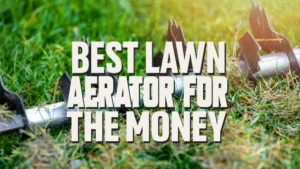









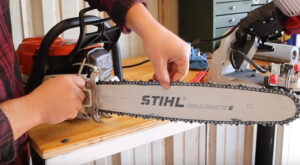
Leave your comment